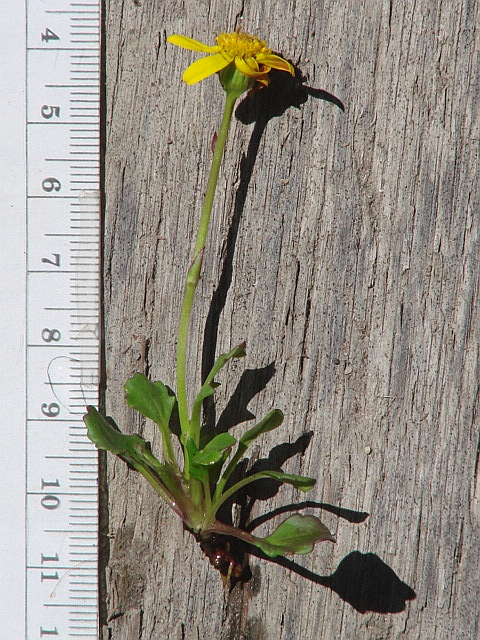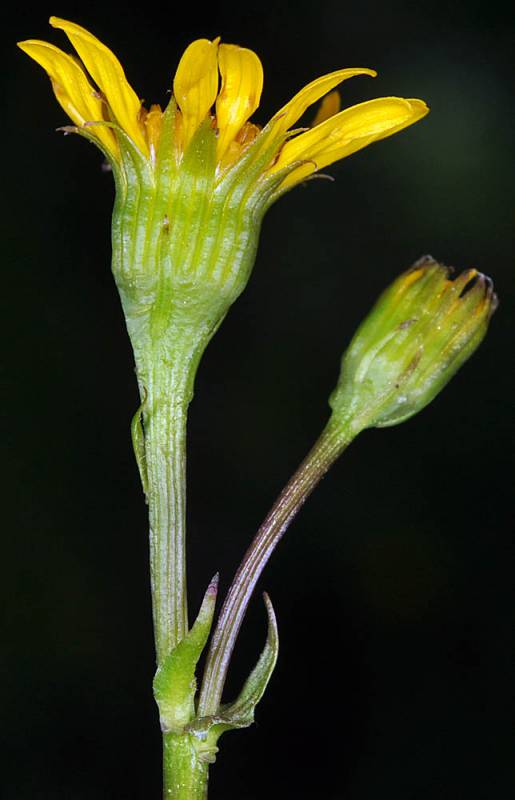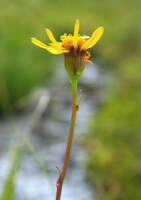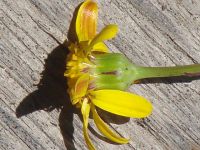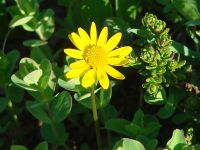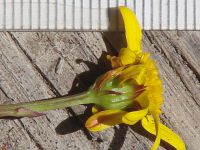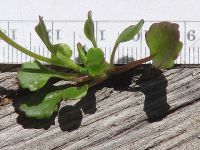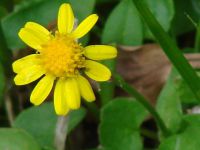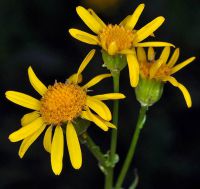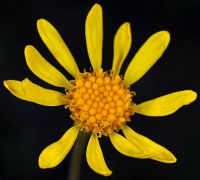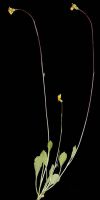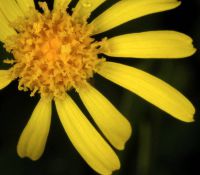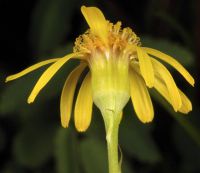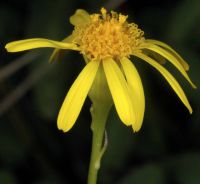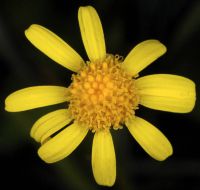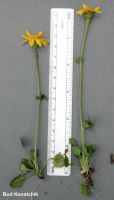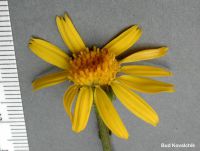Distribution: Occurring on both sides of the Cascades crest in Washington; British Columbia to California, east to Alberta, Montana, and Wyoming.
Habitat: Wet meadows in the subalpine and alpine.
Flowers: July-September.
Origin: Native
Growth Duration: Perennial
Conservation Status: Not of concern
Pollination: Bees, flies, beetles, wasps
Glabrous, fibrous-rooted perennial from a short, slender rhizome, 5-30 cm. tall.
Leaves alternate, small, the basal ones sub-rotund or broadly obovate with wavy margins, on long petioles, the blades up to 2.5 cm. long and 2 cm. wide; cauline leaves few and reduced, the stem sometimes naked.
Heads usually solitary, the disk 8-15 mm. wide; involucre 5-8 mm. high, the bracts sometimes purplish-tipped; rays 7-14 mm. long, yellow.
Achene
A Packera with a large, single head growing in a wet alpine meadow is probably this species.
Publication: Sida. 18: 635. 1999.
Senecio aureus L. var. subnudus (DC.) A. Gray
Senecio cymbalarioides Buek [HC]
Senecio subnudus DC.
-
var. subnuda – cleftleaf groundsel
 Occurring on both sides of the Cascades crest in Washington; British Columbia to California, east to Alberta, Montana, and Wyoming.
Occurring on both sides of the Cascades crest in Washington; British Columbia to California, east to Alberta, Montana, and Wyoming.
PNW Herbaria: Specimen records of Packera subnuda in the Consortium of Pacific Northwest Herbaria database
WA Flora Checklist: Packera subnuda checklist entry
OregonFlora: Packera subnuda information
E-Flora BC: Packera subnuda atlas page
CalPhotos: Packera subnuda photos


